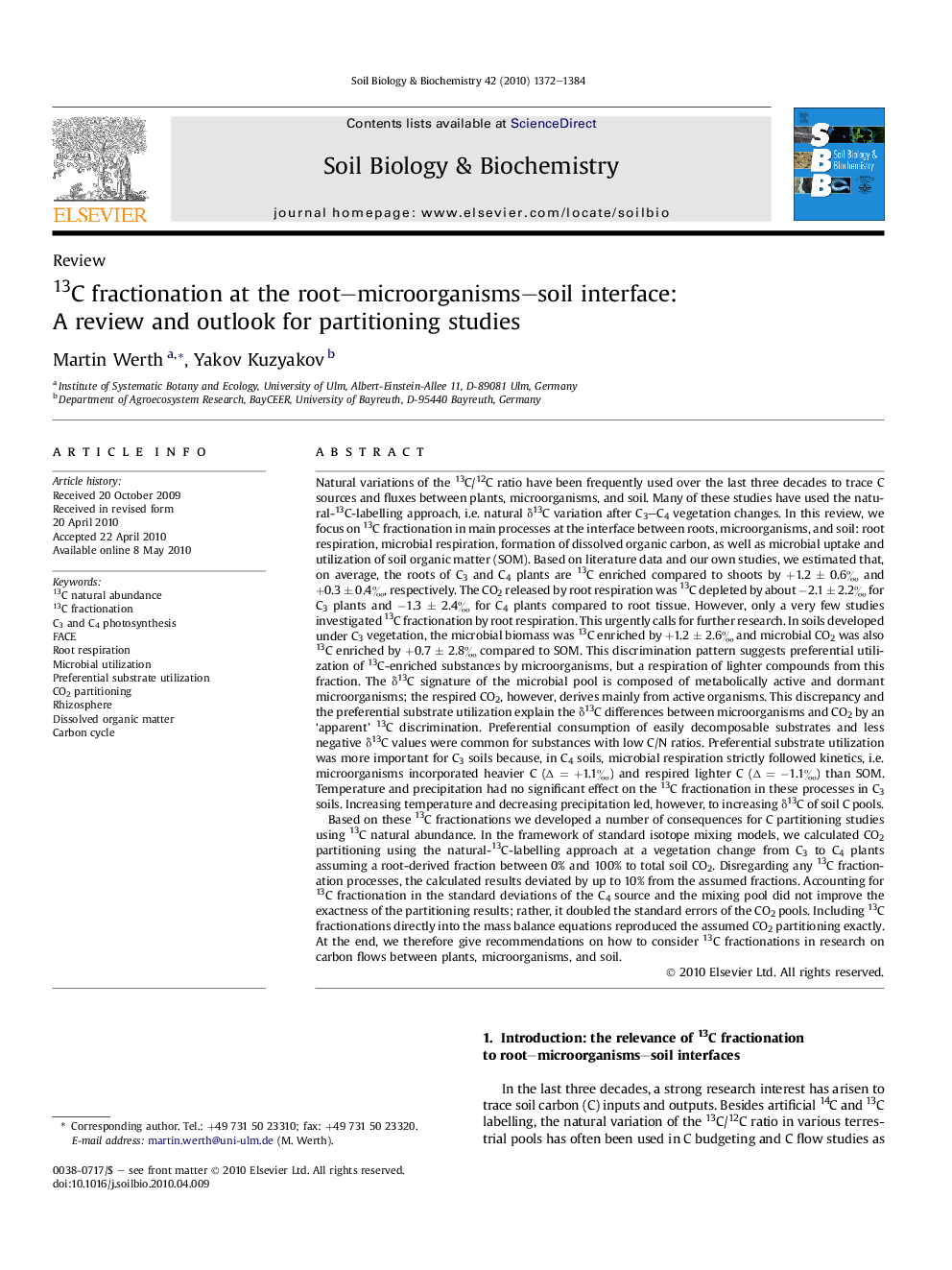| Article ID | Journal | Published Year | Pages | File Type |
|---|---|---|---|---|
| 10846106 | Soil Biology and Biochemistry | 2010 | 13 Pages |
Abstract
Based on these 13C fractionations we developed a number of consequences for C partitioning studies using 13C natural abundance. In the framework of standard isotope mixing models, we calculated CO2 partitioning using the natural-13C-labelling approach at a vegetation change from C3 to C4 plants assuming a root-derived fraction between 0% and 100% to total soil CO2. Disregarding any 13C fractionation processes, the calculated results deviated by up to 10% from the assumed fractions. Accounting for 13C fractionation in the standard deviations of the C4 source and the mixing pool did not improve the exactness of the partitioning results; rather, it doubled the standard errors of the CO2 pools. Including 13C fractionations directly into the mass balance equations reproduced the assumed CO2 partitioning exactly. At the end, we therefore give recommendations on how to consider 13C fractionations in research on carbon flows between plants, microorganisms, and soil.
Keywords
Related Topics
Life Sciences
Agricultural and Biological Sciences
Soil Science
Authors
Martin Werth, Yakov Kuzyakov,
